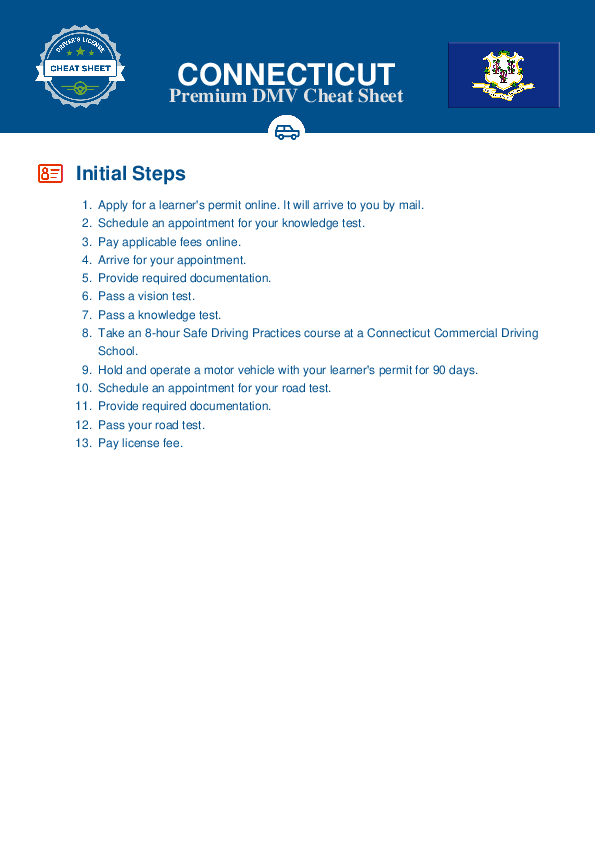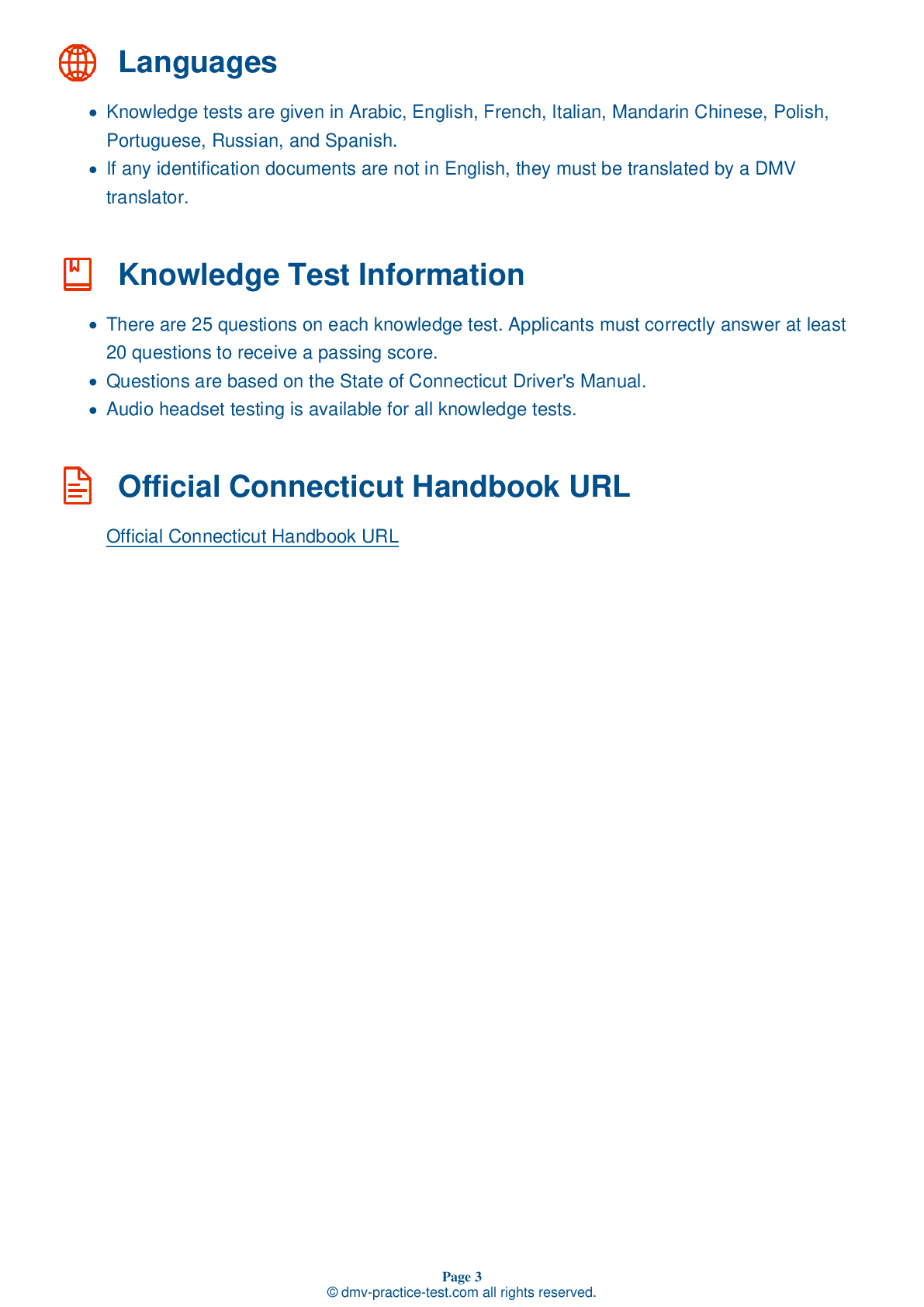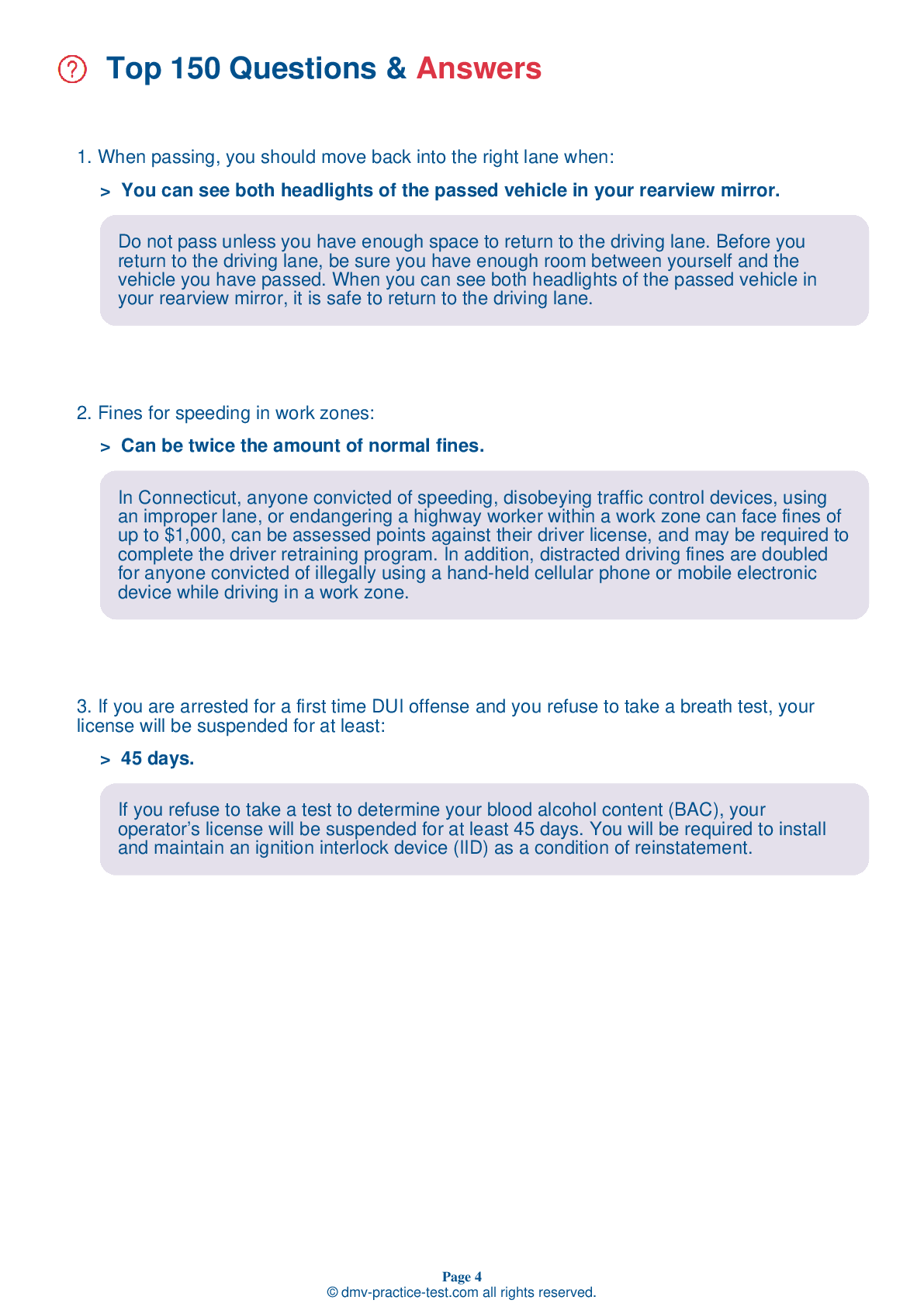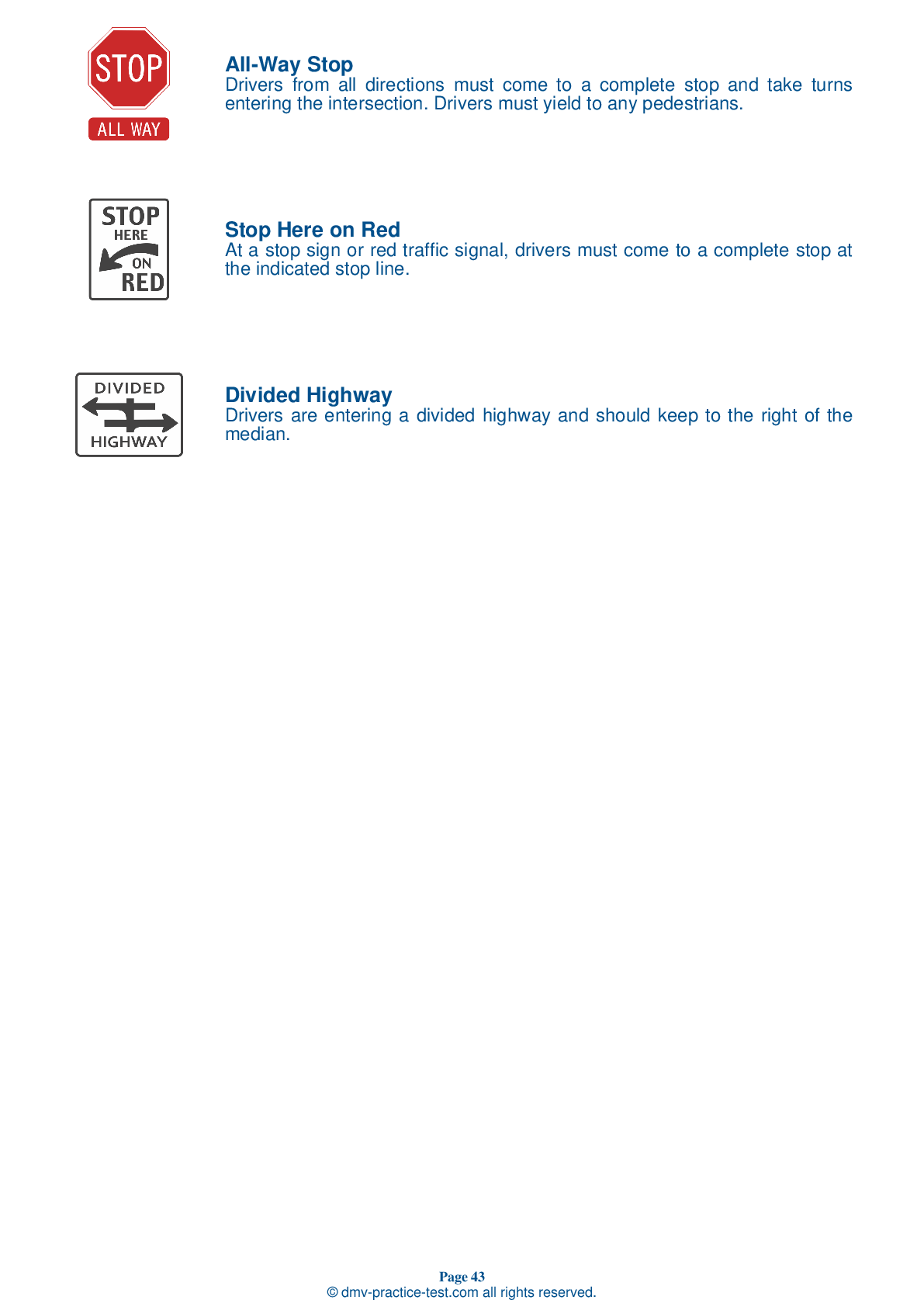FREE Connecticut DMV Practice Test #18 Page 2 of 3
This set of Connecticut DMV practise tests was just updated for January 2025. It includes questions based on the Connecticut Driver Handbook's most essential traffic signs and regulations for 2025. Use actual questions that are very similar (often identical!) to the DMV driving permit test and driver's licence exam to study for the DMV driving permit test and driver's licence exam.
Each practise test question has a hint and explanation to assist you in remembering the concepts. The written component of the official DMV test will include questions about road rules, traffic signs, and driving statutes, as well as information from the Driver Handbook.
To achieve the required passing grade, you must correctly answer 20 of the 25 questions. Take our DMV practise exam to help you prepare for your Connecticut instruction permit or driver's licence.
The DMV exam is available in several languages.
Using any form of testing help will result in an automatic fail, and the DMV may take further action against your driver's licence, so avoid it.
9 . While driving at night, a vehicle coming toward you has its high beams on, making it hard for you to see the road ahead. You should:
If an oncoming driver fails to dim their high beams, you should avoid looking directly at the headlights. Instead, look toward the right edge of your lane and watch the oncoming vehicle out of the corner of your eye.
10 . To pass on a two-lane road, you should:
It can be hard to judge the speed of oncoming vehicles. They do not always seem to be coming as fast as they really are. Always be sure you can safely change lanes when passing on a two-lane street. If you are not sure of an oncoming vehicle's speed, wait to pass until the oncoming vehicle has passed and you are sure there is enough space for you to change lanes safely.
11 . When you see a flashing yellow light at an intersection, you should:
A flashing yellow light at an intersection indicates that drivers should slow to a safe and reasonable speed and proceed with caution.
12 . This sign means:
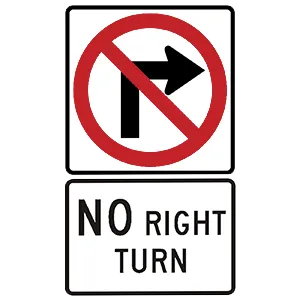
Where this sign is posted, it is prohibited to make a right turn. It would be unsafe and unlawful to make a right turn at an intersection with this sign.
13 . This road sign means:
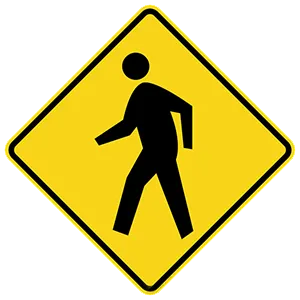
Warning signs are usually yellow with black markings. This sign indicates the presence of a crosswalk, regardless of if it is marked on the pavement or not. Upon seeing this sign, you should be alert and allow any pedestrians to cross the road safely.
14 . This sign indicates that:
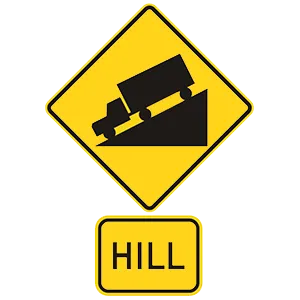
Warning signs are usually yellow with black markings. This sign warns drivers about an upcoming steep hill. Drivers should slow down and be ready to control their speed and protect their brakes from damage.
15 . Use your headlights on rainy, snowy, or foggy days:
On rainy, snowy, or foggy days, it may be difficult for other drivers to see your vehicle. Under these conditions, headlights make your vehicle easier to see. If the weather requires you to turn on your windshield wipers, you must also turn on your low beam headlights.
16 . Signs and lane markings that indicate a no passing zone tell you that:
Signs and lane markings that indicate a no passing zone tell you that you cannot see far enough ahead to safely pass. It is dangerous to pass where another vehicle is likely to enter or cross the road. Such places include intersections, railroad crossings, and shopping center entrances.
Need Car Insurance? No problem!
Compare the best rates in Connecticut and find a personalized policy that meets your needs.
1. Are You Currently insured ?
2. Married ?
3. Do you own your Home?
4. Do you have more than 1 car ?
5. Have you or a Family Member Honorably Served in U.S. Military ?
6. Your Name
7. Age
8. Zip code
IMPORTANT REMINDER:Auto Insurance is Mandatory to drive in Connecticut. Get covered before you hit the road to avoid any fines.
Ranked by best match
